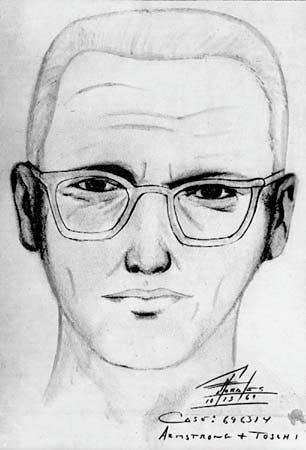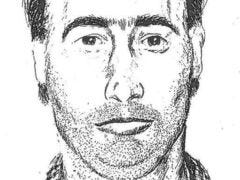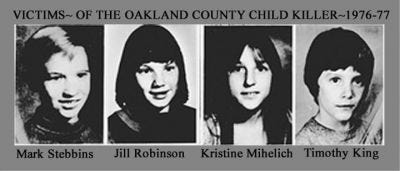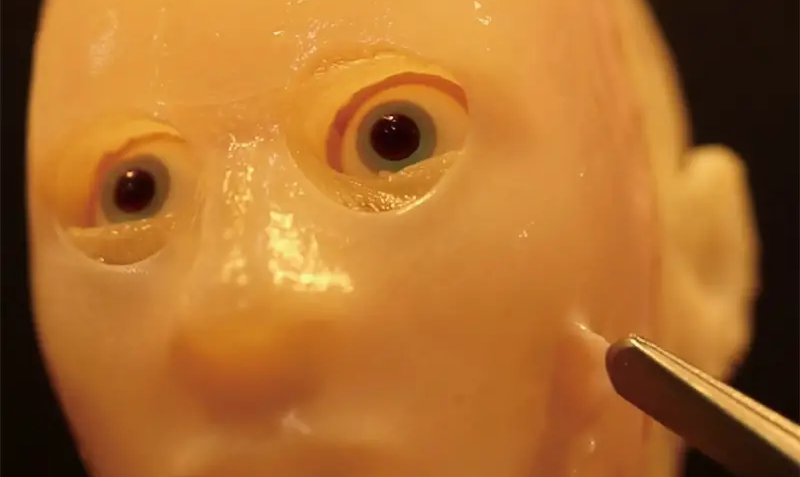If you consider yourself a true crime lover, you’re probably familiar with the thrill that comes with solved true crime cases. Whenever a horrendous murder occurs, we armchair detectives find ourselves diving into every aspect of the crime, and, as proven puzzle lovers, we want to find answers.
This article was written and published by Renee Rose.
That being said, sometimes cases go unsolved. Experts estimate, based on UCR data, that our nation currently has 250,000 unsolved murders and this number is thought to increase by about 6,000 cases per year. These are not only tragic statistics for the loved ones of those who have had their lives taken from them but also one that makes true crime lovers like me go absolutely bonkers over the fact that so many cases have reached virtually no resolution.
While murders are always disturbing, those that go unsolved keep me up at night in a way that is hard to describe. Today, I’ve done a little bit of research and compiled a list of 4 unsolved true crime cases that are sure to irk you. In a world where we expect law enforcement agencies to track down the bad guy, putting them away for their crimes, it is disheartening that so many cases go unsolved.
The cases that I’ll be discussing today are brutal, leaving horrified communities and stumped police scratching their heads. These cases have left lingering questions floating in the air for decades after they occurred, haunting those close to the victims. While these cases all vary in their details, they all share one thing in common: a killer who has never been uncovered.
London’s Most Notorious Serial Killer, Jack the Ripper

“With the Vigilance Committee in the East End: A Suspicious Character” from The Illustrated London News, 13 October 1888
The first case I wanted to discuss today is one that you’ve undoubtedly heard about before: Jack the Ripper. Notorious as London’s most notorious serial killer (and one that continues to perplex the world), Jack the Ripper prowled the East End over a century ago, terrorizing the area and preying on sex workers. Killing and mutilating at least 5 known victims, Jack the Ripper caused the East End neighborhood to be “horrified to a degree bordering on panic”.
One of the most interesting things about Jack the Ripper is the fact that the killer mutilated the bodies of their victims in a way that suggested the perpetrator had a substantial knowledge of human anatomy. Additionally, the way that Jack the Ripper would disembowel women, often removing their kidneys and uteruses, seems to point to abhorrence for women.
All five of the killings which have been attributed to Jack the Ripper took place within no more than a mile of each other, either in or near the Whitechapel district of London between August 7 to September 10, 1888.
Apparently, a number of letters were allegedly sent by the killer to the London Metropolitan Police Service (also known as Scotland Yard). In these letters, the killer seemed to taunt police about his crimes as well as hinting that the killings would continue. Although these letters may have been nothing more than a hoax, one of these particular letters is the origin of the moniker “Jack the Ripper” which was published at the time of the attacks.
Despite the countless investigations claiming definitive evidence of the killer’s identity, their motive- as well as his or her name- has never been confirmed.
There are various theories surrounding Jack the Ripper’s identity which have been produced largely over the last several decades. These include claims that the famous Victorian painter Walter Sickert, a grandson of Queen Victoria, was the killer. Amazingly, since 1888, more than 100 suspects have been named and these incidents have contributed to the widespread folklore and aura of mystery surrounding the murders.
The Zodiac Killer

Sketch of the Zodiac Killer. Image Source: Wikipedia
The Zodiac Killer is yet another serial killer, uncaught, that has kept many up at night wondering just who they were and what their motives were. The Zodiac Killer was a serial killer who operated in Northern California between the years of at least the late 1960s to the early 1970s. Killing five known victims in Benicia, Vallejo, Napa County, and San Francisco between December 1968 and October 1969, the Zodiac Killer targeted mostly young couples. The killer is also considered responsible for the killing of a male cab driver, Paul Stine.
At one point, the Zodiac Killer himself claimed to be responsible for a total of 37 victims and, in the years since the murders, the killer has been linked to several other cold cases. The first murders that have been widely attributed to the Zodiac Killer were the brutal shootings of high school students David Faraday and Betty Lou Jensen on December 20, 1968, on Lake Herman Road. The couple was on their first date and had parked in a gravel turnout that was well-known as a lover’s lane.
The bodies of the two victims were found shortly after 11:00 pm that night by Stella Borges who lived nearby. It appeared that Jensen had actually exited the car, possibly ordered out by the killer, and her body was found 28 feet from the car. Faraday, on the other hand, appears to have been shot in the head halfway out of the vehicle as he exited.
The next of the Zodiac Killer’s victims would cross the killer’s path on July 4, 1969. Just before midnight, Michael Mageau and Darlene Ferrin drove in the Blue Rock Springs Park, just four miles from the Lake Herman Road murder site, and parked. As the couple sat in the car, it is believed that a second car drove up and parked behind them. The driver exited the vehicle and approached the passenger side door of Ferrin’s car, carrying a 9 mm Luger and a flashlight.
The killer would flash the flashlight into Mageau and Ferrin’s eyes before shooting at them and firing five times. While both victims were hit by the shots, many of the bullets passed through Mageau and into Ferrin as they sat in the vehicle. Though badly hurt, Mageau would survive the ordeal and reported that as he lay in the car moaning, the killer would hear him and turn around to shoot each victim two more times before finally driving away.
Mageau described the killer as a 26-to-30-year-old, 195-to-200-pound, 5-foot-8-inch white male with short, light brown curly hair. At 12:40 am on July 5, 1969, an anonymous man called the Vallejo Police Department both to report and claim responsibility for the attack while simultaneously claiming responsibility for the killings of Faraday and Jensen just six months before. While police were able to trace the call to a phone booth at a gas station at Springs Road and Tuolumne, they were unable to uncover the identity of the caller.
One of the things that the Zodiac Killer is most known for is his series of letters, the first of which were received at the Vallejo Times Herald, the San Francisco Chronicle, and The San Francisco Examiner on August 1, 1969. These first three letters were nearly identical and would later be described by a psychiatrist as having been written by “someone you would expect to be brooding and isolated”.
In these letters, credit was taken for both the Lake Herman Road shootings as well as those at Blue Rock Springs. In what is arguably the most interesting part of the letters and would later become the origin of the Zodiac Killer’s name, each letter also included one-third of a 408-symbol cryptogram which the killer claimed contained his identity. In the conclusion of each letter, the killer would demand that the letters be printed on the front page of each paper or he would “cruse around all weekend killing lone people in the night then move on to kill again, until I end up with a dozen people over the weekend.”
Over the next year, several more letters would be sent to various newspapers, each containing cryptic symbols and more claims to the murders that would follow up until the murder of Paul Stine on October 11, 1969, the last known victim of the Zodiac Killer.
Although the identity of the Zodiac Killer has never been confirmed, there have been countless theories over the years as to who exactly the killer was. In a four-part documentary that premiered last year on FX, The Most Dangerous Animal of All, one possible suspect is explored: Earl Van Best Jr. While Best is one of the most well-known suspects, he is only one of a string of suspects. Others include Arthur Leigh Allen, Lawrence Kane, Richard Gaikowski, and Ross Sullivan.
Still, the identity of the Zodiac Killer remains a mystery to this day and the case remains open. According to an NBC News article from December of 2020, one of the Zodiac Killer’s ciphers appears to have been recently solved by a group of private citizens. Solved by Australian software engineer Sam Blake, American cryptographer David Oranchak and Belgian software engineer Jarl Van, the decoded cipher seems to state the following:
“I HOPE YOU ARE HAVING LOTS OF FUN IN TRYING TO CATCH ME THAT WASNT ME ON THE TV SHOW WHICH BRINGS UP A POINT ABOUT ME I AM NOT AFRAID OF THE GAS CHAMBER BECAUSE IT WILL SEND ME TO PARADICE.”
The Murder of Blair Adams

Blair Adams. Image Source: Unsolved Mysteries Wiki
If you’ve ever binge-watched episodes of Unsolved Mysteries, it’s likely that you’ve heard of the case of Blair Adams, a 31-year-old Canadian man who was found dead in the parking lot of a Knoxville, Tennessee hotel on July 11, 1996. One of the most interesting details of Adams’ case is that, scattered around his body, was nearly $4,000 in cash of various currencies including Canadian, American, and German money. It was later reported that Adams’ cause of death seemed to be a blow to the stomach.
It is reported that, in the days before his death, Adams had been acting very strange. Not only did he make claims that people were trying to kill him but he also traveled thousands of miles before arriving in Knoxville, Tennessee. Before this, however, his family claims that he began to suffer from mood swings and trouble sleeping. When his mother asked him what was wrong, Adams is reported to have said that he couldn’t tell her.
On July 5, 1996, Adams took all of the money out of his savings account along with thousands of dollars in gold, platinum, and jewelry. Then, on July 7th, he traveled to the Canadian-American border where he was denied crossing due to the fact that he was a single man with a large sum of money on his person. This fit the profile of a drug-trafficker, so Adams was turned away.
On July 8th, Adams arrived at his job at a construction company located in Surrey, British Columbia and quit suddenly. It is then reported that later that afternoon Adams spent a whopping $1,600 on a round-trip plane ticket from Vancouver to Frankfurt, Germany. His flight was scheduled to leave the following day but, just hours after buying his ticket, Adams went to a friend’s house. His friend reports that Adams said he needed to make his way across the border because someone was trying to kill him. Saying that she was unable to help him, his friend reports that he left her home.
On July 9th, Adams turned in his ticket, rented a car, and was able to cross the border into the United States before heading to Seattle. Adams left his rental car at the airport before buying a one-way ticket to Washington, DC. Investigators reported that this was strange because the one-way ticket cost twice as much as a round-trip ticket. Adams’ motives in electing to purchase a one-way ticket at double the price remains a mystery.
After arriving in Washington DC on July 10th, Adams rented a white Toyota before travelling to Knoxville, Tennessee. This is, again, a strange move that has left investigators and family members perplexed as Adams is not known to have been familiar with anyone in the Knoxville area. Apparently, that same day, a mechanic took Adams to a hotel after his car wouldn’t start upon stopping at a gas station around 5:30 pm. The gas station attendant told Adams that his car wouldn’t start because he had the wrong set of keys. The manager of the hotel reports that Adams acted particularly strangely, seeming nervous and walking in and out of the hotel lobby a total of five times before finally getting a room. Sometime after this, Adams exited the hotel and was never seen alive again.
Adams’ body would be discovered twelve hours later, naked from the waist down, in a parking lot located approximately half an hour away from the hotel where he had booked a room. Investigators gathered a series of bizarre clues at the scene of the crime, including the fact that Adams’ pants had been removed in a pulling motion and were turned inside out. Additionally, his socks had also been removed and turned inside out. His shirt was ripped open, his shoes were off, and along with the $4,000 in various currencies scattered around his body, there was also a fanny pack filled with the platinum, gold, and expensive jewelry that he had been carrying on his person.
Interestingly, the most bizarre clue that investigators found at the scene was the key to his rental car which Adams had reportedly lost hours earlier, leaving him stranded in Knoxville in the first place.
After an autopsy, the cause of Adams’ death was reported to be a violent blow to his stomach. Investigators hypothesized that the weapon, possibly a crowbar or a club, had also sliced his forehead open upon impact. It is clear to investigators that Adams put up quite a fight upon being attacked as his killer had ripped locks of hair from his head and there were also indications of defensive wounds on both of his hands. Certain injuries also seem to indicate that Adams was sexually assaulted.
A crucial piece of evidence recovered at the scene, though not being attributed to anyone specific up to this point in time, was a long strand of hair found in Adams’ hand that is believed to belong to the killer. Investigators believe that the attack on Adams likely occurred at around 3:30 am based on reports of screaming coming from the parking lot at that time from a construction worker close to the scene. This report seems to indicate that the screams were that of a woman.
Although the killer has yet to be identified, Adams’ family holds out hope. Unfortunately, there are no known suspects in the murder. Police first suspected that the murder was a result of a robbery gone wrong but this was eventually ruled out based on the fact that none of the money or valuables that Adams had in his possession had been taken. Investigators also explored the possibility that the killing may have been in some way drug-related but no evidence was found to support this possibility either.
On the evening before Adams’ death, witnesses report seeing him with an unidentified male at several restaurants in the Knoxville area. A composite sketch of this man was created but no leads regarding the sketch have been found and it remains unknown as to whether or not this individual had anything to do with the murder.

Composite sketch of the man seen with Blair Adams. Image Source: Unsolved Mysteries Wiki
The Oakland County Child Killer

Image Source: The True Crime Files
Between February 15, 1976 and March 16, 1977, two girls and two boys aged between 10 and 12 years old went missing outside their homes in Oakland County, Michigan. The victims include Mark Stebbins (age 12), Jill Robinson (age 12), Kristine Mihelich (age 10), and Timothy King (age 11). Each child’s body would later be discovered in a public area within 19 days of each child’s disappearance. All children were either strangled or shot, with both of the two boys also being sexually assaulted. The deaths of the children sparked a murder investigation that would be the largest in U.S. history at the time.
Mark Stebbins, the first of the Oakland County Child Killer’s victims, lived in Ferndale and didn’t return home from an American Legion Hall on February 15, 1976. His body was found four days later and he was wearing the same clothes that he had last been seen wearing. His body was located lying in a snowbank in the parking lot of an office building. He had been sexually abused with a foreign object and strangled, with two lacerations located on the left rear of his head. Rope marks were also identified on both his ankles and wrists, indicating that the boy had been bound during his captivity.
On December 22, 1976, Jill Robinson left her home in Royal Oak after a reported argument with her mother over dinner preparations. The next day, her bicycle was located behind a local shop. Her body was then located alongside Interstate 75 in Troy on December 26th, roughly 8 miles from Royal Oak. The location where the child’s body was found was, eeriely, within view of the Troy police station. The little girl had been brutally shot in the face with what investigators believe to be a 12-gauge shotgun. Her body was fully clothed and she was still wearing the backpack that she had taken with her when she left her home on December 22nd.
On January 2, 1977, Kristine Mihelich was reported missing from her home in Berkley, Michigan after she failed to return home from a trip to the 7-Eleven store located on 12 Mile Road in Oakshire. Her body was later discovered by a mail carrier 19 days after she was reported missing. Her body was found fully clothed on the side of a rural road in Franklin Village. Her cause of death was reported to be smothering less than 24 hours earlier (indicating that she must have been held captive for many days before her death) and her body was in view of nearby homes.
On the evening of March 16, 1977, Timothy King left his home in Birmingham to go to a nearby drugstore. After failing to return home, a search began which would cover the entire Detroit metropolitan area. His body would be located on the evening of March 22nd by two local teenagers in a relatively shallow ditch alongside Gill Road in Livonia, roughly 21 miles from his hometown of Birmingham. Investigators reported that King had been sexually assaulted with a foreign object, like Mark Stebbins, and had been suffocated approximately six hours before his body was discovered.
Although there were both abductions and murders around the Oakland County area within the same period of time as these child murders, no specific link tied the victims above to these crimes due to variations in the cases. These include the bludgeoning death of Cynthia Cadieux, 16, of Roseville on January 16, 1976 in nearby Bloomfield Township and the abduction of 14 year-old Jane Allan who was found dead in a river in Maimsburg, Ohio four days after accepting a ride while hitchhiking in Royal Oak. Allan’s cause of death was found to be carbon monoxide poisoning.
Another murder that investigators do believe to be committed by the Oakland County Child Killer, while this remains unconfirmed, is that of Kimberly Alice King, age 12, who disappeared from Warren on September 15, 1979. Investigators believe that she was abducted and that her disappearance is linked to the Oakland County Child Killer although her body has never been found. If King’s death is related to the Oakland County Child Killer, her death is considered atypical as the other victim’s bodies were left in plain view of roadways and were found fairly quickly after they were discarded while King’s body hasn’t been located.
A few weeks after the body of Timothy King was discovered, a psychiatrist working with the task force received a letter that was reported to be riddled with spelling errors. This letter was written by an anonymous person who claimed to be a sadomasochistic slave of “Frank” or “OCCK”.
In the letter, this person wrote that both they and “Frank” had served in the Vietnam War and that “Frank” had been traumatized by the fact that he had killed children during the war. The anonymous author went on to say that the motive behind the Oakland County Child Killer’s murders was to take revenge on more affluent citizens, such as those of Birmingham, wanting rich people to suffer for sending forces to Vietnam. The author went on to implicate himself in the child murders, saying that they had accompanied “Frank” as he sought boys to kill but that the events were causing him to lose his sanity, leaving him suicidal.
The author instructed the psychiatrist to respond to their letter by printing the code words “weather bureau says trees to bloom in three weeks” in that Sunday’s Free Press edition. In return, the author said, they would provide photographic evidence in exchange for immunity from prosecution. The psychiatrist also arranged to meet the author at a local bar but the author, calling himself “Allen” in the letter, never showed up and was never heard from again.
While there have been a few persons of interest in the Oakland County Child Killer murders, no primary suspect has ever been identified. In 2013, an anonymous informant reported a blue AMC Gremlin buried in a farm field that was being developed in Grand Blanc. Investigators investigated this lead as Timothy King was last seen in a blue Gremlin but no further evidence has been uncovered regarding this lead.
In February of 2019, the Investigation Discovery Channel aired a two-part documentary about the Oakland County Child Killer. At the same time, WXYZ-TV investigative reporter Heather Catallo announced that a key suspect, convicted child sex offender Arch Edward Sloan, had failed a polygraph test when he was interviewed by the Oakland County Child Killer Task Force in 2010 and again in 2012. In 2012, new DNA technology supposedly found that Sloan’s car, which was a 1966 Bonneville, contained hair which held the same mitochondrial profile as evidence which was found on the victims but it wasn’t Sloan’s.
In my research regarding any new leads in the Oakland County Child Killer case, I came across an article from September of 2020 entitled, New book alleges cover-up in Oakland County Child Killer case. In the article, a new book entitled The Snow Killings, written by investigative reporter Marney Rich Kennan, is reported to detail Kennan’s last decade of research into the Oakland County Child Killer case.
Kennan claims that her book contains evidence that law enforcement covered up an important lead into the murders centered around Christopher Busch, a four-time convicted pedophile who had been polygraphed about the case and let go by law enforcement shortly before Timothy King was abducted in 1977. As Kennan puts it, she is “convinced he was involved”. Busch apparently committed suicide in his family’s home in Bloomfield Township back in 1978 but Kennan doesn’t believe it was a suicide.
“It definitely looked staged. And I don’t know anybody that looks at that scene and thinks it was a suicide. I talked to investigators who were at that suicide scene who said yeah, we thought this was our guy.”- Marney Rich Kennan
While Kennan does not suggest that Busch was the killer responsible for the Oakland County Child Killer murders, she does state that her book provides evidence that law enforcement covered up the Busch lead. “We know for sure that he was involved, but by no means do we know that he was the killer,” Keenan said.
To this day, the identity of the Oakland County Child Killer remains a mystery. According to the article, the Michigan State Police task force is still working on the case, and when asked to comment on Kennan’s book, stated that they don’t comment on fiction.





